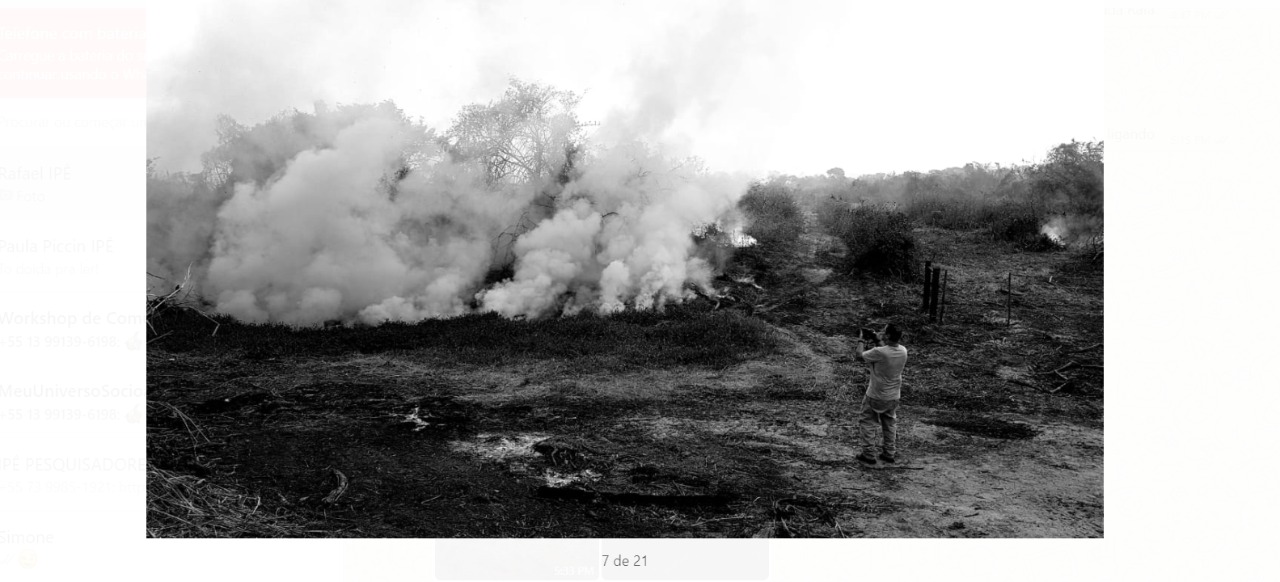::cck::865::/cck::
::introtext::
A study carried out by a group of 30 scientists, with the participation of Rafael Chiaravalloti (IPE), reveals that around 17 million vertebrate animals died in fires in the Pantanal in 2020. They counted the carcasses through sampling in the burned areas. The study was led by Walfrido Tomas, from Embrapa Pantanal.
The impact of this loss of biodiversity is significant, as mentioned by Rafael, who is also a researcher at Imperial College London and professor of the Professional Master’s Degree at ESCAS IPÊ. He highlights that the number of 16,952 million vertebrates refers to animals that died immediately as a result of the fires, but the effects on wildlife are even more drastic. “In the study, we emphasize that despite being a high number, it does not include animals that died seeking refuge in burrows and also does not count the animals that died as a result of fires, such as the difficulty in finding resources such as water and food.”
The study highlights that the intensification of fires is among the most visible consequences of climate change. In 2020, for example, the biome registered a 40% reduction in the volume of rain and an increase in the average temperature of 2°C, since 1980; this combination created the ideal conditions for the 2020 destruction scenario. “Actions such as deforestation and inadequate use of fire combined with climate change make the Pantanal an extremely vulnerable biome to human actions”, highlights Chiaravalloti.
The results of the study impress even those who have been in the field, counting carcasses, such as Gabriel Oliveira, who’s taking a master’s degree in Biodiversity Conservation and Sustainable Development at ESCAS. “Whenever there was a big fire spot, the next day we were in the field, we would make transects – straight-line trails in the burned area where we walked counting the carcasses. This must be done the next day because carcass degradation is very fast due to predators such as hawks, for example. In the field, we already had an idea that small mammals and reptiles would have been hit hard, but the numbers of the study were shocking”.
Strategic plan for the Pantanal
In order to prevent future fires in the Pantanal from having the impact observed in 2020, Rafael Chiaravalloti is at the head of a group of more than 70 researchers seeking to advance an agenda with potential for the conservation of the biome.
“In June, we met in two Virtual Workshops that assessed the bases for strategic planning for protected areas in the biome. Together with the participants, we developed two Reports with guidelines for conservation: protected areas, livestock, fishing and ecotourism in the Pantanal (in Portuguese). The documents show the importance of working with an integrated management plan for protected areas, thinking about landscape management. It is worth highlighting the alternative mechanisms for creating protected areas, such as through the Sustainable Use Authorization Term (TAUS)”, as the researcher points out. The Pantanal, despite being considered a Natural Heritage of Humanity and Biosphere Reserve by Unesco, has a small area protected by public or private Conservation Units.
Among the measures with the potential to increase the size of the protected area in the biome is the creation of RPPNs – Private Natural Heritage Reserve. Currently, according to the report, the Pantanal has 22 protected areas in this category. Of these, 45% belong to private owners and 55% to institutions. Among the challenges is the updating of the Management Plan, as 36% of the RPPNs have the plan, however only one RPPN (4%) updated the document in the last five years.
The reports also highlighted the need to expand plans to promote sustainable meat production in the Pantanal, strengthen the fishing chain and professionalize community-based tourism in the region.
::/introtext::
::fulltext::::/fulltext::
::cck::865::/cck::


